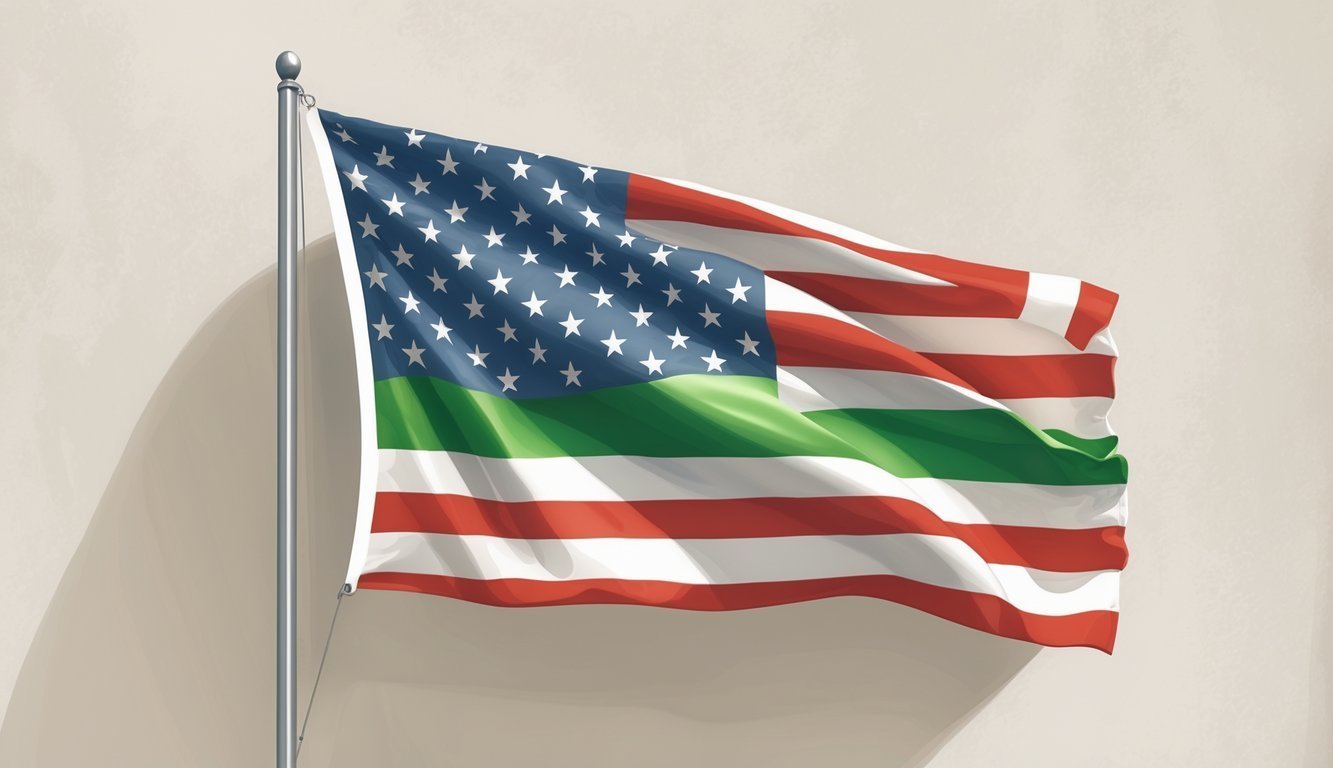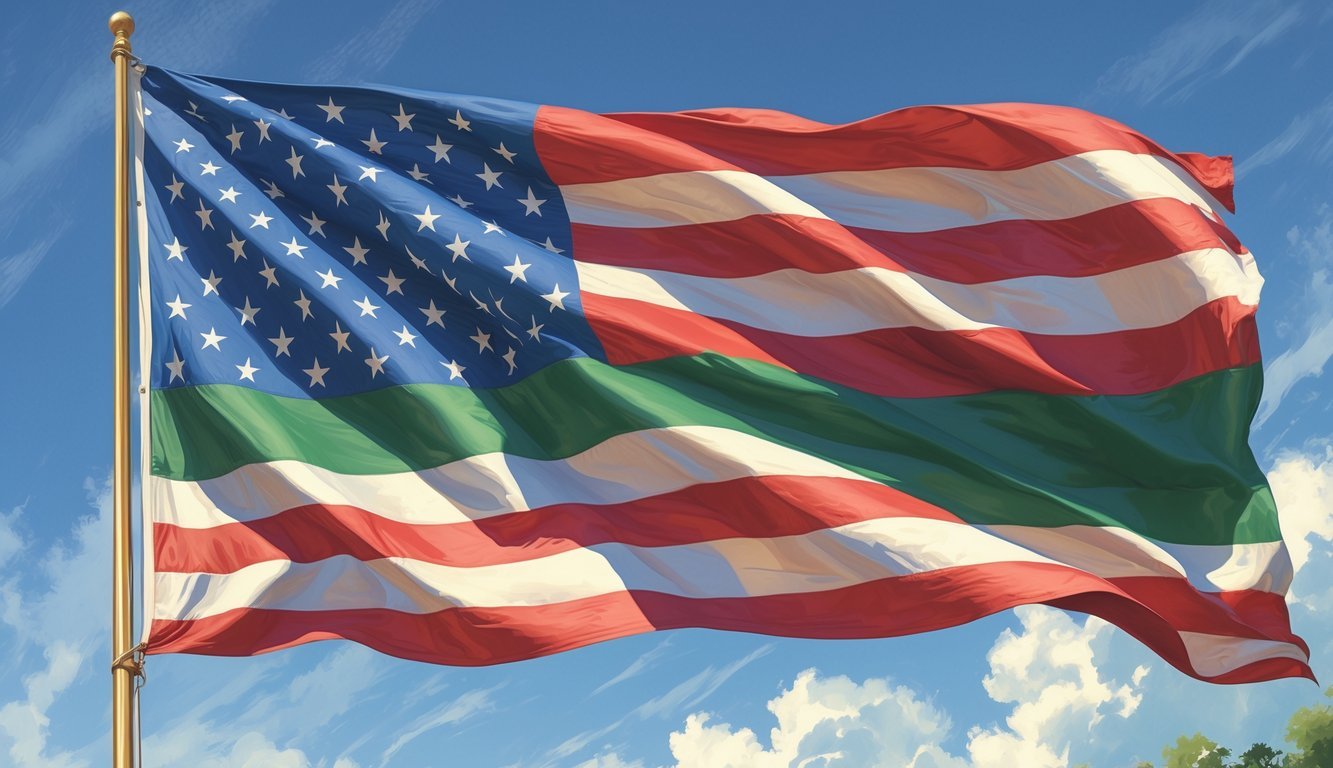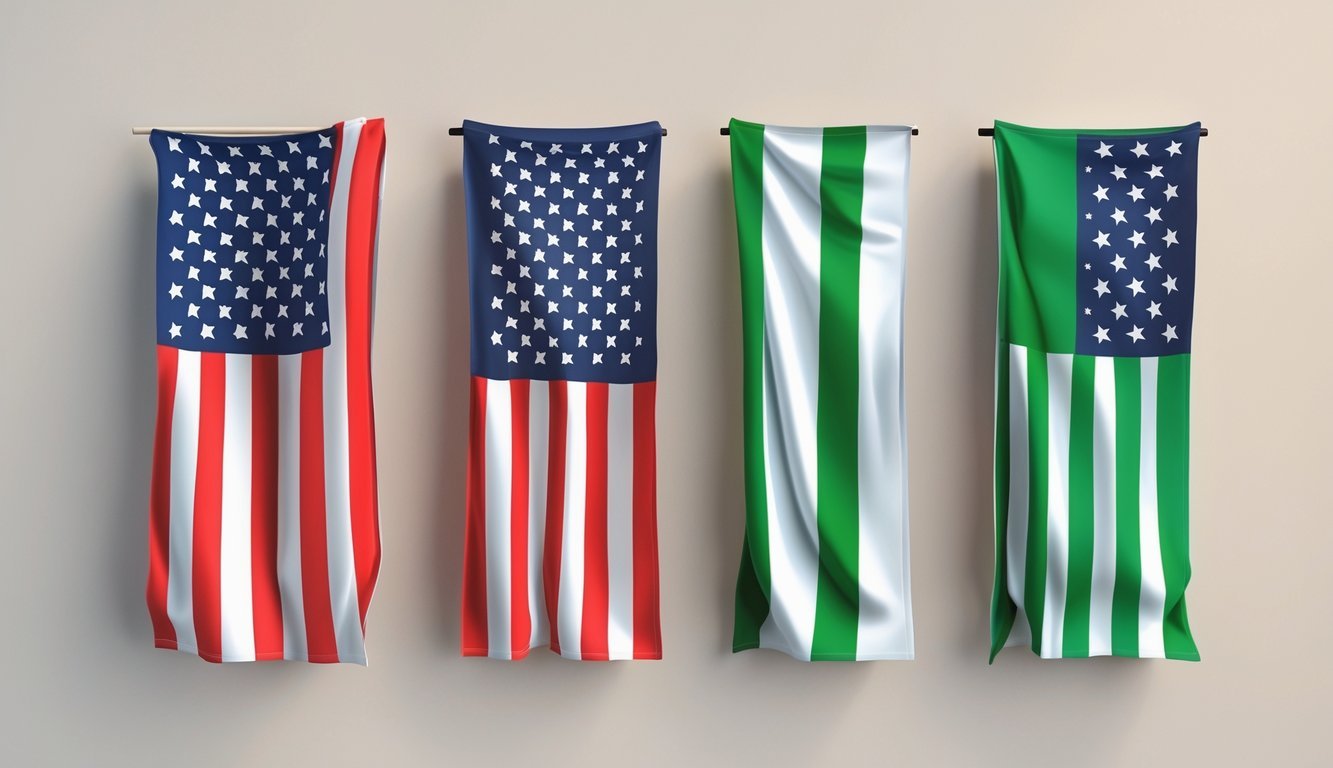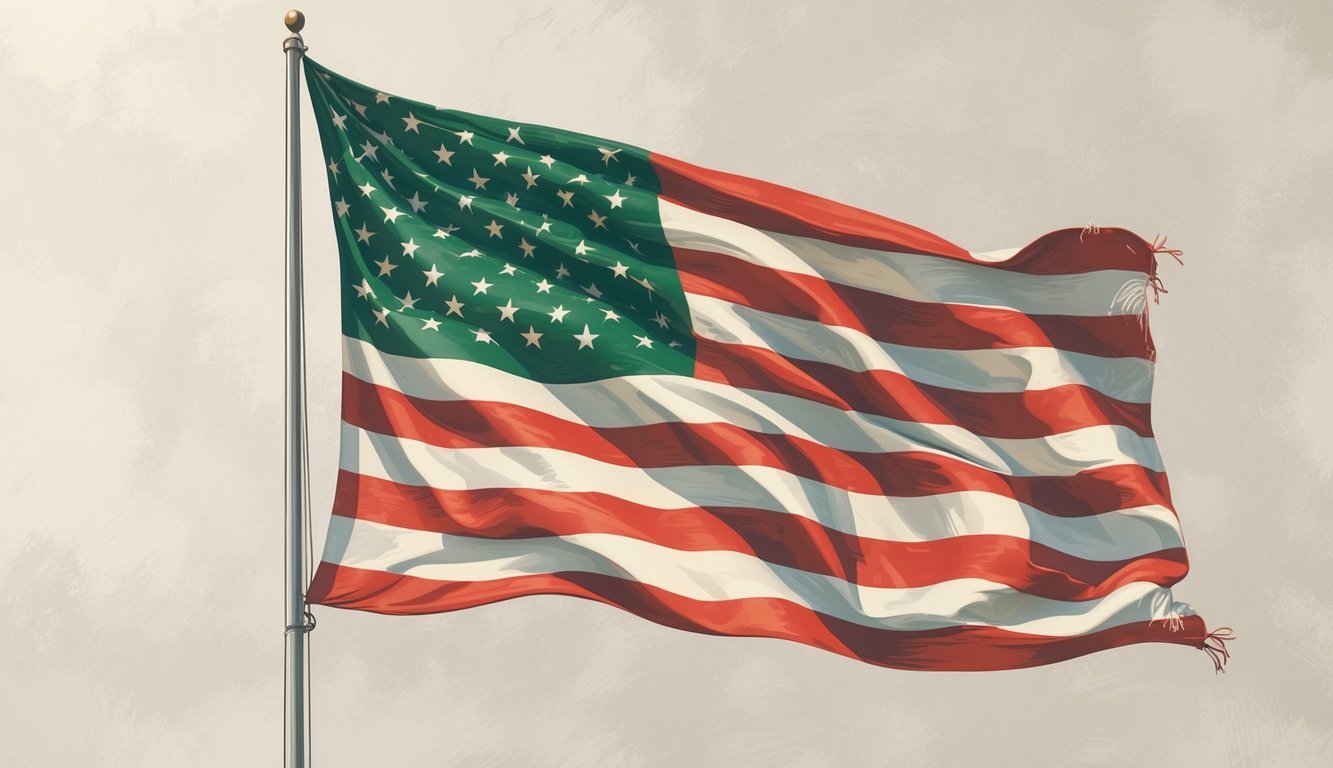PsychNewsDaily Publishers
100 Summit Drive
Burlington, MA, 01803
Telephone: (320) 349-2484
PsychNewsDaily Publishers
100 Summit Drive
Burlington, MA, 01803
Telephone: (320) 349-2484
The green stripe honors federal agents, military personnel, and conservation workers, symbolizing their roles in maintaining safety, order, and environmental protection in communities.

The American flag with a green stripe stands out as a symbol that honors certain groups who serve and protect. That green stripe highlights federal agents like Border Patrol, Park Rangers, and military soldiers or veterans.
It marks their role in keeping order and safety, drawing a line between chaos and peace.
This flag variation connects to bigger ideas of protection and support for people working behind the scenes to keep us secure. You might spot it with other flag versions that use different colored stripes to honor police, firefighters, or medical workers.
Each stripe color carries its own meaning, so you can figure out who the flag recognizes.
When you know what the green stripe means, you can appreciate the flag’s message a bit more. Seeing it reminds you of people dedicated to serving the country—not just the military, but also federal agents guarding borders and parks.

The American flag with a green stripe carries meaning tied to service and protection. That green stripe stands for courage and support for special groups who serve communities.
People often call this the Thin Green Line flag. It honors professions connected to law enforcement and the military.
The green stripe on this flag stands for strength, safety, and nature. It shows respect for those protecting the environment—park rangers, wildlife officers, and conservation workers.
These folks work hard to preserve natural spaces, wildlife, and parklands.
Green also represents the military, especially army personnel serving with bravery and determination. The color is all about courage and the sacrifices made by service members.
The stripe reminds us of the important roles these groups play in keeping communities safe.
The Thin Green Line flag swaps out one white stripe for a green one. That line separates law enforcement officers and military personnel from danger.
It stands for protection and the barrier those workers create between order and chaos.
You’ll see the Thin Green Line flag used to show support for federal agents like border patrol and wildlife officials. It also honors emergency service workers and search and rescue teams.
People wear or display the flag to recognize the risks these folks face every day as they serve the public.
The green stripe shines a light on many service professions that don’t always get recognized. Border patrol agents, park rangers, animal control officers, and fish and wildlife officers all fall under this banner.
These groups quietly enforce laws, protect wildlife, and preserve natural resources.
It also pays tribute to military personnel and some law enforcement officers, especially federal agents. Emergency medical technicians, dispatchers, and civil air patrol members sometimes get included too.
The flag shows respect for their courage and determination in tough jobs.

If you look at different American flag versions, you’ll see each color and stripe means something special. These variations honor different groups and ideas, but they keep some familiar details from the original flag.
The traditional U.S. flag has 13 red and white stripes and 50 white stars on a blue field called the union. The stripes show the original 13 colonies.
The stars stand for the 50 states.
Colors matter too:
This design has barely changed over time, representing liberty and freedom for Americans.
The Thin Blue Line flag uses a black and white American flag with one blue stripe. It honors police officers and law enforcement.
Unlike the green stripe flag, which supports federal agents like border patrol and park rangers, the Thin Blue Line flag focuses on police and law order.
You’ll spot the Thin Blue Line flag at police stations or law enforcement events. It highlights the role of officers in protecting communities.
Other colored stripe flags include red stripes and yellow or orange stripes. For example:
The green stripe stands out because it honors federal agents like border patrol, park rangers, and conservation workers.
Sometimes, you’ll see flags with five green stripes or gray shades to support certain groups, but those aren’t as common.
Each stripe color gives you a way to show appreciation for different public servants and still respect the classic American flag.

The green stripe on an American flag stands for specific groups and ideas. It often honors military members, federal agents, and other workers who protect and serve the country.
The green stripe shows support for military personnel and federal agents. It’s a sign of respect for those working to keep order and safety, like soldiers and Border Patrol agents.
The thin green line represents the role of law enforcement and conservation officers. It marks the boundary between chaos and order, honoring those who help keep the peace.
A black flag with a green stripe highlights the sacrifices of military members and law enforcement. It recognizes their service and the tough challenges they face.
An all-green American flag is pretty rare and doesn’t really have a widely accepted meaning. Usually, green on flags points to specific service groups, not the whole flag being green.
The green and white flag sometimes represents environmental or conservation efforts. It may honor park rangers and wildlife officers who protect natural resources.
The green stripe doesn’t actually stand for the NYPD. People usually connect the blue stripe to police departments like the NYPD.
On the other hand, the green stripe tends to represent military personnel or federal agents.